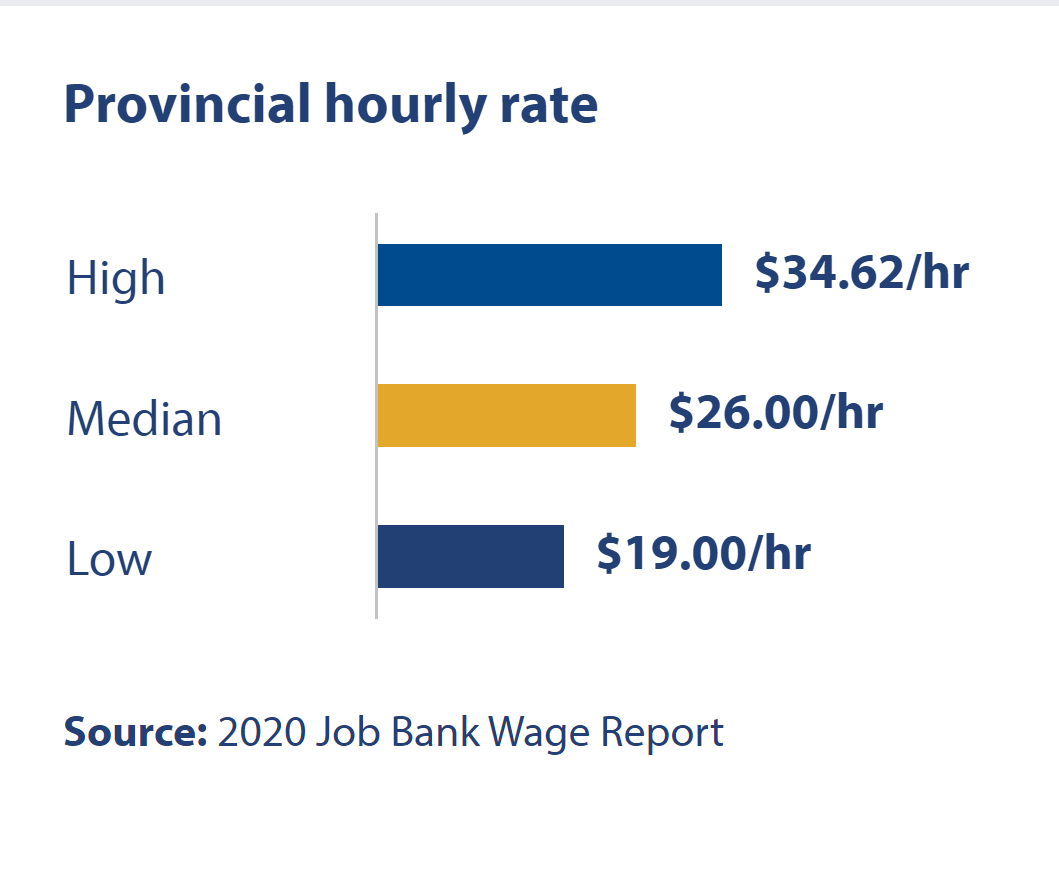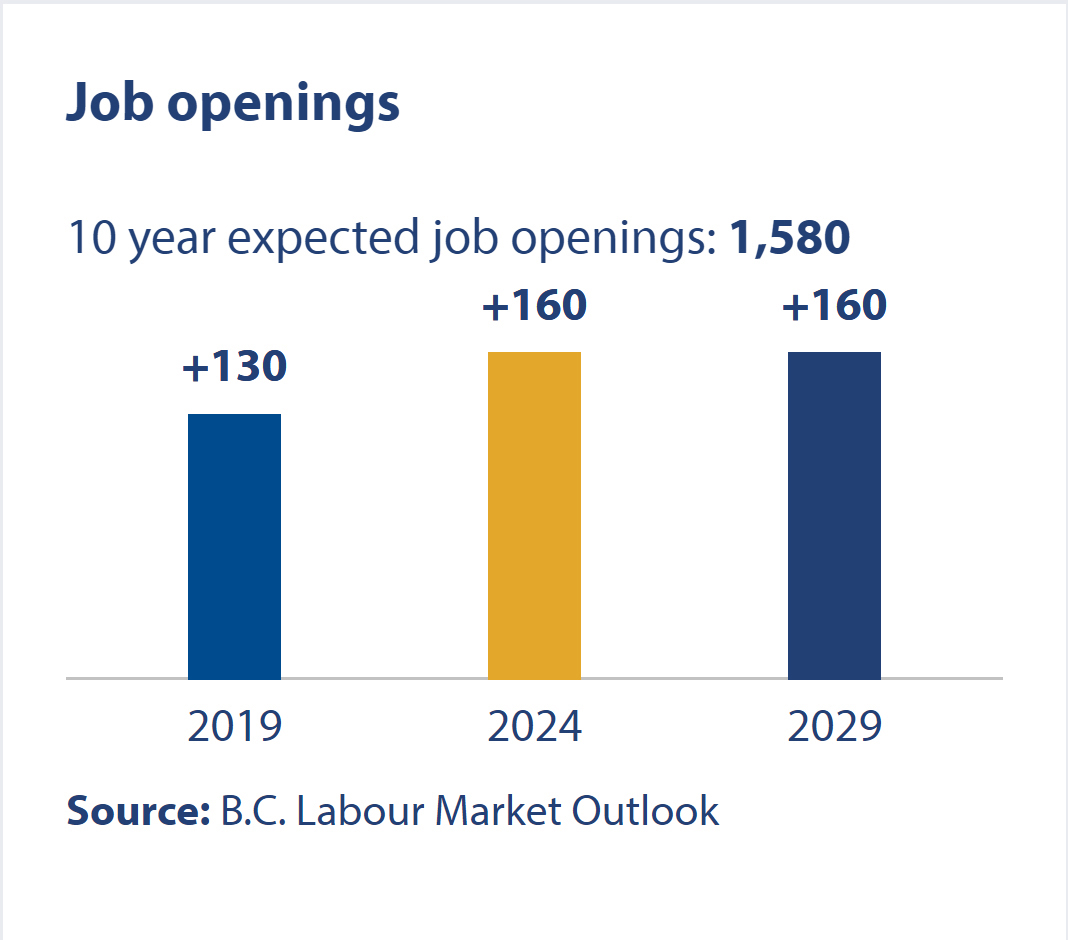
Our interior design graduates go on to work in a variety of design fields as they work toward becoming a professional registered interior designer. Some of those fields include: retail design, hospitality, exhibition/museum design, film/tv production, commercial/corporate, and sustainable design. Many graduates also go on to launch their own design firms while others find careers as agents for wholesale resource firms. With BC's construction industry still booming, it's never been a better time to get into interior design.
Program Outcomes
Graduate Numbers and Student Perspectives
BC's Ministry of Advanced Education & Skills Training provides Kwantlen Polytechnic University (KPU) with access to the BC Student Outcomes reporting system for graduate survey data. This survey collects and distributes information from former post-secondary students who are asked to evaluate many aspects of their educational experience, employment, and further education. The following data was collected using the BC Outcomes Surveys, institutional data/records, program data, and alumni surveys. Survey respondent rates vary; the 2019-2021 survey had a response rate of 47% with 17 out of 36 alumni who responded.
Current Graduate Numbers + Retention/Attrition
The interior design program offers 20 full time seats per academic year. Students complete approximately 16 credits per semester over four years to complete the program's total of 128 credits. Student completion is calculated from fall of 1st year to completion of spring 4th year. Backfilling of seats sometimes occurs in year 2 of the program; however, backfilling rate of seats is not calculated in final totals at the insitutional level. At the program level, we use collected student data and have determined our backfill rate is approximately 1.5%. Our course repeat rate is low at 1.5%. Following are the most recent graduate numbers per year:
Graduate Headcount by Academic Year*:
|
2019/2020 |
2020/2021 |
2021/2022 |
| 18 | 19 | 13 |
Graduation Rates
- Of the students graduating from KPU Bachelor of Interior Design in 2020, 70% graduated in 4 years.
- Of the students graduating from KPU Bachelor of Interior Design in 2021, 89% graduated in 4 years; 11% of students graduated in 5 years.
- Of the students graduating from KPU Bachelor of Interior Design in 2022, 54% graduated in 4 years; 46% of students graduated in 4.3 years.
Retention + Attrition Rates:
Retention is calculated from fall of year 1 to fall of year 2. To date, based on last three years as below, overall attrition rate averages at 15%.
- 79% of students admitted in the fall of 2019 returned in the fall of 2020, putting attrition at 21%.
- 90% of students admitted in the fall of 2020 returned in the fall of 2021, putting attrition at 10%.
- 85% of students admitted in the fall of 2021 returned in the fall of 2022, putting attrition at 15%.
Employment Rates
The following data was collected using the BC Outcomes survey and is based on survey respondents only. There are several measures the government uses to assess each institution with respect to the outcomes students achieve within two years of graduation with intended targets for each. Included within these outcomes are employment rates and employment rates as they relate to the profession. The targets from the gov't are 85% for employment and 78% for employment in a related profession. Interior design employment outcomes per graduate year are as follows:
- 100% of students surveyed who graduated in 2019 are employed with 92% in interior design or a related profession.
- 100% of students surveyed who graduated in 2020 are employed with 100% in interior design or a related profession.
- 100% of students surveyed who graduated in 2021 are employed with 100% in interior design or a related profession.
The majority of survey respondents above took 1-3 months to find a job upon graduation.
Salary Expectations Upon Graduation
The career potential for this field is strong at the moment with large employment increases between 2021 and 2022. When the economy is strong, building construction increases, which means jobs for interior designers. The career potential clearly depends on the individual, their portfolio and work experience after they have graduated. Over time, some of our graduates go on to start their own firms or become senior partners in other firms.
You may find more information on the field of Interior Design and salary outlooks on the National Occupational Classification located on the Human Resources and Skills Development Canada website at NOC-Interior Design OR on the WorkBC website at WorkBC-Occupations.
The current provincial outlook for this occupation:



Source: WorkBC Website
Acceptance into Graduate Programs
Several graduates move on to Masters programs and most often in Architecture, Design, or Education; informally collected data at the program level shows this rate is approximately one student per year. However, many graduates choose to work for several years in the profession prior to engaging in a Masters program. Our most recent data is below.
- 2 out of 18 students who graduated in 2020 applied for graduate school with 2 accepted.
- 1 out of 19 students who graduated in 2021 applied for graduate school with 0 accepted.
- 1 out of 13 students who graduated in 2022 applied for graduate school; result pending.
Further to the above, acceptance into further studies at ANY credential level (i.e. BC Building Code, LEED, NCIDQ) is listed in percentages below:
- In BGS survey from 2019-2021, 12% of KPU Bachelor of Interior Design graduates stated they have taken further studies after graduation.
Note: Data obtained from the results of the BGS survey two years after graduation. The data includes the percentage of graduates who have taken further studies in any credential level.